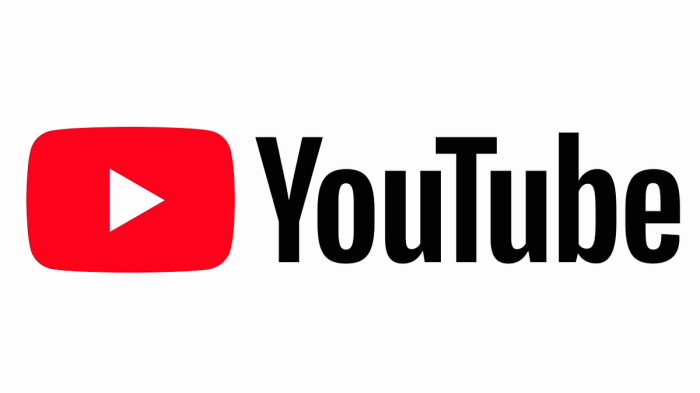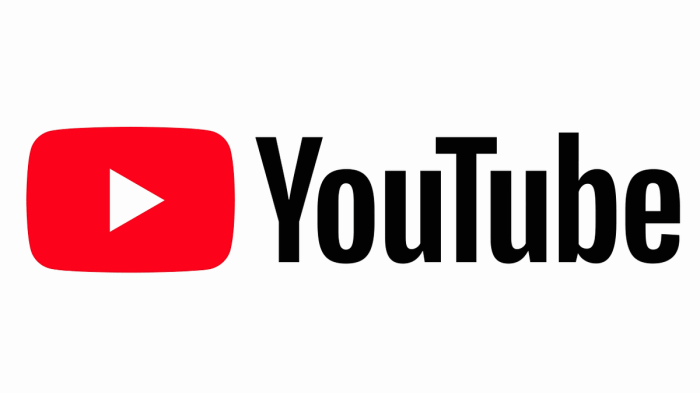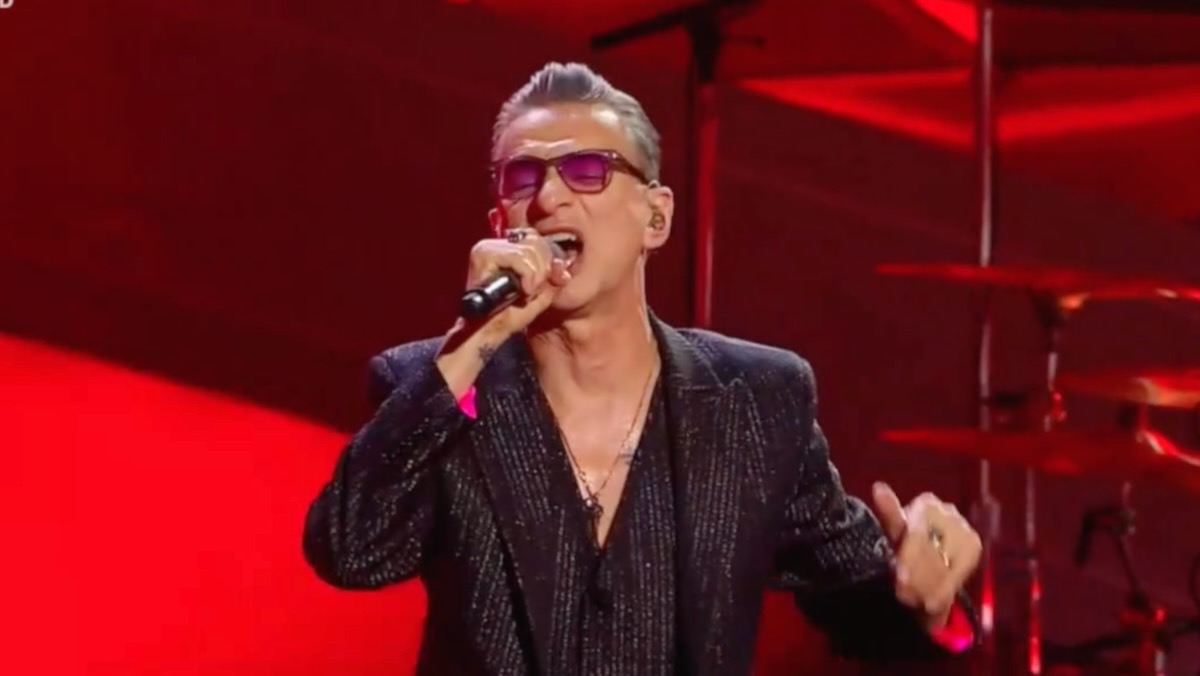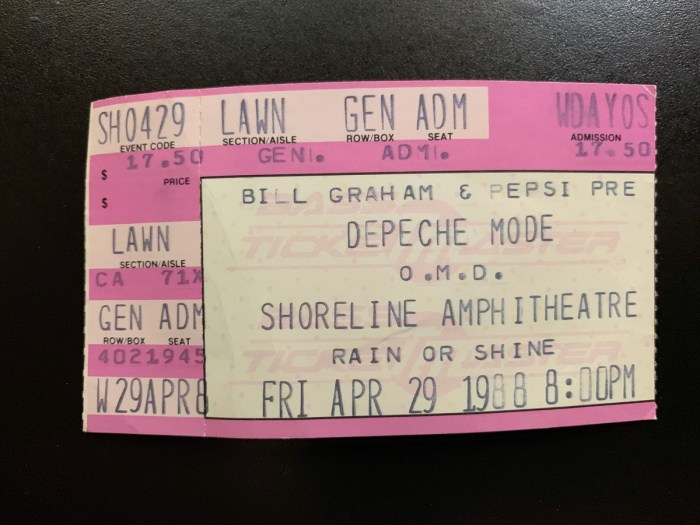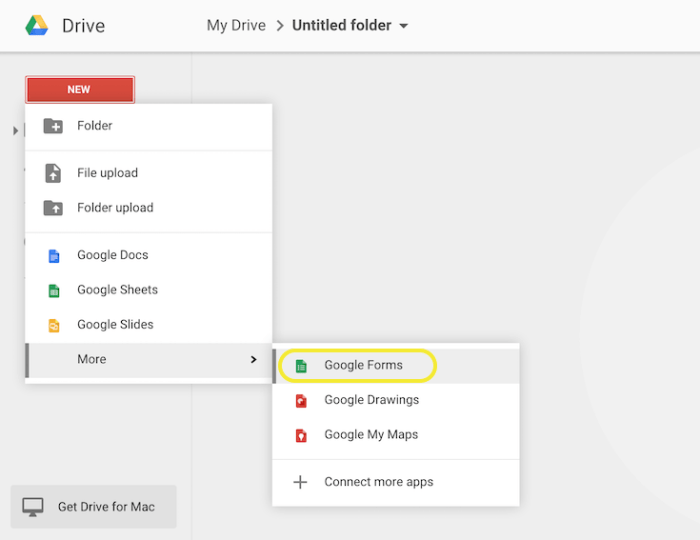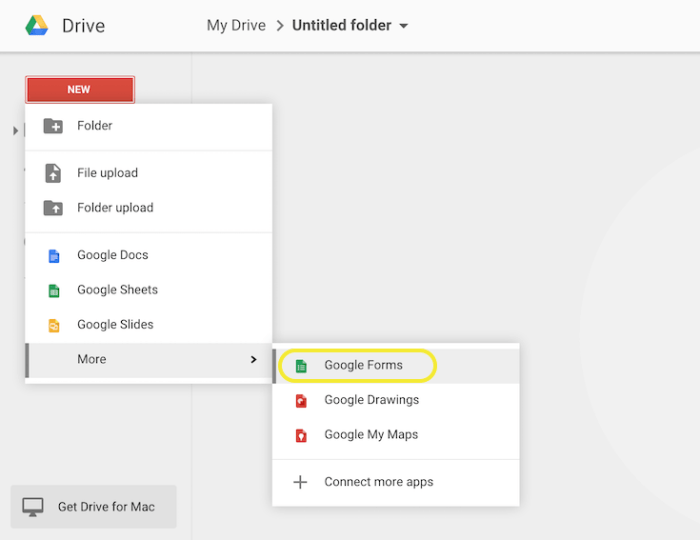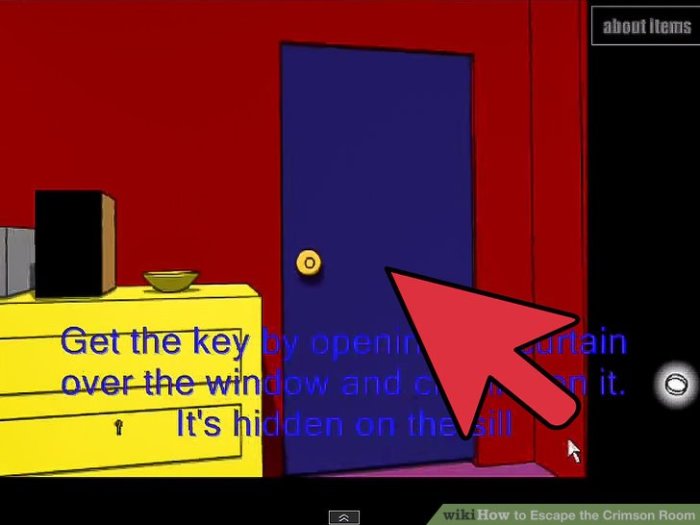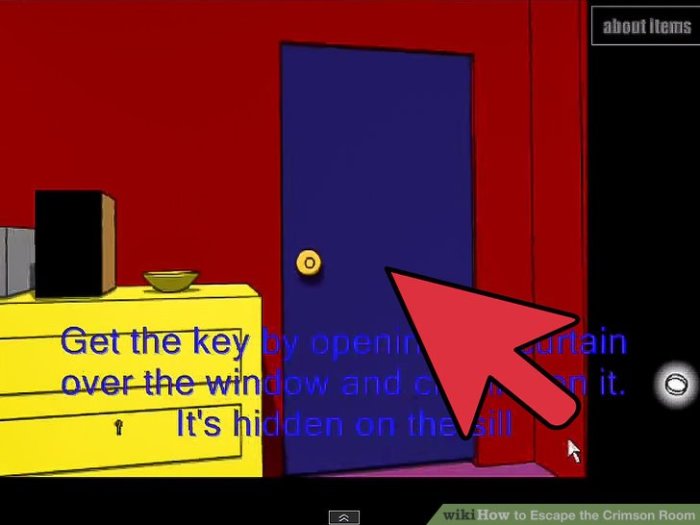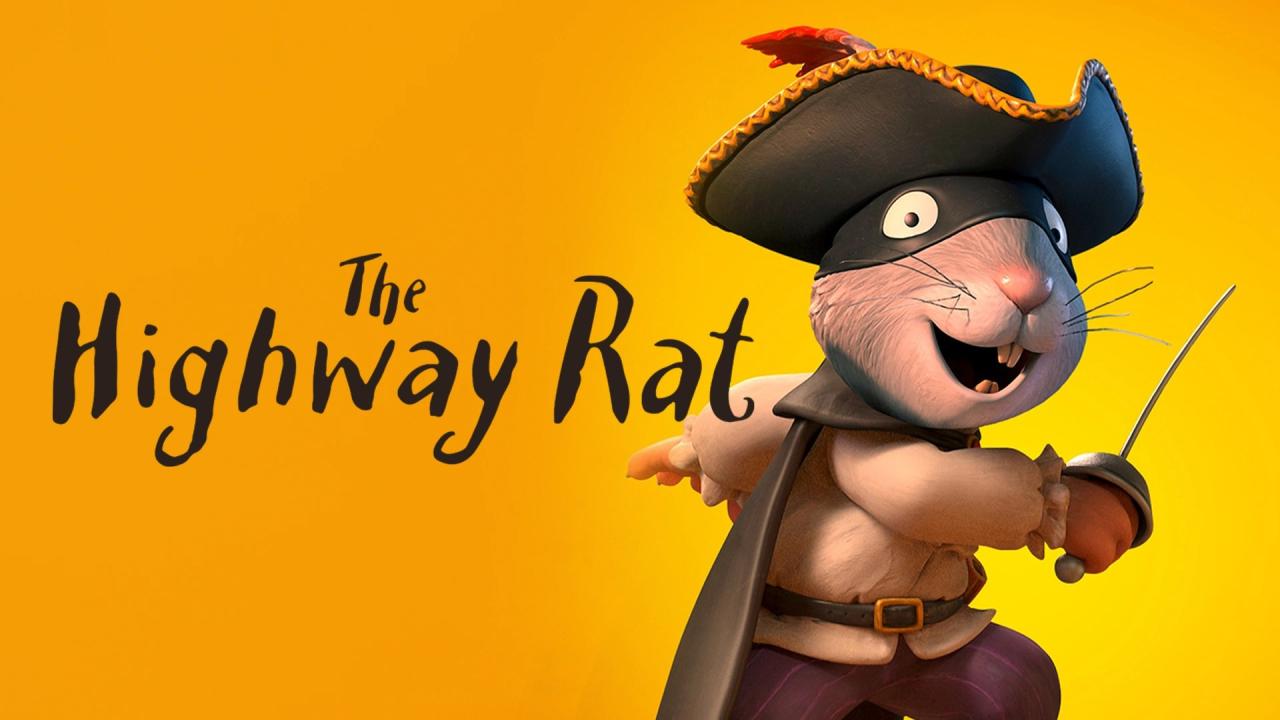Know if You Are Ready to Start a Family? This journey is filled with excitement and challenges, and it’s crucial to understand the factors involved before welcoming a new member into your lives. We’ll explore financial stability, emotional preparedness, and the physical, relationship, and lifestyle adjustments needed for a successful family life.
From meticulously crafting a budget to navigating potential conflicts in your relationship, this comprehensive guide equips you with the tools and insights to make informed decisions. We’ll discuss practical considerations, different parenting approaches, and the diverse range of family structures, empowering you to embark on this life-changing journey with confidence.
Financial Readiness
Starting a family is a joyous journey, but it also comes with significant financial responsibilities. Understanding the financial implications, creating a budget, and developing a savings plan are crucial for a smooth transition and a secure future. This detailed guide will help you navigate the financial landscape of parenthood.
Financial Implications of Starting a Family
The financial landscape of parenthood is multifaceted and extends far beyond the initial costs of a baby. Expenses related to childcare, education, and healthcare accumulate over time and significantly impact family budgets. Understanding these implications early on is vital for planning and preparing.
Childcare Costs
Childcare costs vary widely depending on factors such as location, type of care (e.g., daycare, nanny), and the child’s age. For example, in some developed countries, the cost of quality daycare can exceed a significant portion of a family’s income. Daycare costs can be substantial, and the expenses increase if you need to hire a nanny or have multiple children.
Education Expenses
Education costs, from primary school to university, can be substantial and are often underestimated. The cost of tuition, books, and other educational materials adds to the overall financial burden. Additionally, future costs like extracurricular activities and special needs education should be considered.
Healthcare Expenses
Healthcare expenses are another crucial aspect of family finances. Regular checkups, vaccinations, and potential medical emergencies contribute significantly to overall healthcare costs. It is prudent to have a plan for managing these expenses, including health insurance and potential out-of-pocket costs.
Thinking about starting a family? It’s a big decision, and honestly, it’s totally understandable to feel overwhelmed. You might also find yourself unexpectedly transported to a whole other dimension of awesomeness, like those nerds who reunited during Pharrell’s set at Odd Future’s Camp Flog Gnaw Carnival. This crazy reunion highlights the unpredictable joy and surprising connections life throws your way.
Ultimately, knowing if you’re ready to start a family is a deeply personal journey, and there’s no right or wrong answer, just your own truth.
Average Family Expenses Across Regions
The cost of raising a family differs greatly depending on the region. In developed nations like the United States or the United Kingdom, the average family expenditure on childcare, education, and healthcare is notably higher than in developing countries. These differences stem from varying costs of living, quality of services, and access to resources. For example, a family in the United States might spend significantly more on healthcare than a similar family in a developing country.
Methods for Saving and Budgeting
Effective saving and budgeting are paramount for future family needs. Creating a detailed budget that accounts for all projected expenses is the first step. A variety of savings methods, such as high-yield savings accounts, individual retirement accounts (IRAs), or even specific education savings accounts (ESAs), can help in building a financial safety net. Furthermore, regular reviews and adjustments to the budget are necessary as family needs and circumstances evolve.
Sample Financial Plan
This sample financial plan Artikels a hypothetical scenario and is not a substitute for professional financial advice.
| Family Size |
Projected Income |
Expenses (Estimated) |
Savings Goal |
| One Child |
$80,000 |
$50,000 |
$30,000 |
| Two Children |
$90,000 |
$65,000 |
$25,000 |
| Three Children |
$100,000 |
$80,000 |
$20,000 |
Note: This table presents a simplified view and does not account for individual circumstances. The expenses are estimates and can vary considerably depending on specific needs and lifestyle choices. The savings goal is a target, and actual savings may differ.
Emotional and Mental Well-being
Embarking on the journey of parenthood is a significant life change, demanding profound emotional and mental preparation. It’s not merely about physical readiness; it’s about cultivating a mindset that can navigate the inevitable challenges and joys that come with raising a child. This involves self-awareness, recognizing personal strengths and weaknesses, and developing coping mechanisms to manage stress and potential emotional fluctuations.A strong foundation of emotional and mental well-being is crucial for parents to provide the nurturing and stable environment children need to thrive.
Understanding your emotional landscape and how you respond to stress, pressure, and change is paramount to becoming a supportive and loving parent. This proactive approach fosters resilience and equips parents to handle the unpredictable nature of parenthood.
Self-Reflection and Identifying Strengths and Weaknesses
Prospective parents benefit significantly from honest self-reflection. This process involves examining personal values, beliefs, and past experiences. Understanding your reactions to various situations, your communication style, and your coping mechanisms allows you to proactively address potential areas for improvement. Recognizing your strengths and weaknesses equips you to navigate the demands of parenthood with more confidence and resilience. This self-assessment is a proactive step towards better emotional preparedness.
Assessing Emotional Stability
Assessing emotional stability involves a multi-faceted approach. It’s not about achieving a perfect score, but rather about gaining awareness of your emotional responses and patterns. Regular self-reflection, journaling, and seeking feedback from trusted friends or family members can provide valuable insights. Consider how you handle stress, conflict, and overwhelming situations. Do you tend to withdraw, become aggressive, or find healthy ways to cope?
Understanding these patterns can help you develop strategies for maintaining emotional equilibrium during the unpredictable demands of parenthood.
Potential Emotional Challenges Faced by Prospective Parents
Several emotional challenges can arise during the transition to parenthood. These can include feelings of anxiety, stress, guilt, or even depression. These emotions are normal responses to significant life changes. Lack of sleep, financial concerns, and the overwhelming responsibility of raising a child can contribute to these feelings. Moreover, the adjustment to a changed lifestyle and the pressure of meeting societal expectations can also be significant factors.
Thinking about starting a family? It’s a huge decision, and honestly, it’s totally cool to take your time figuring out if you’re truly ready. While you’re pondering the big questions, you might also enjoy some new music. Check out this new track by Kipp Stone Tata, kipp stone tata new song listen , to help you unwind and maybe get a little more clarity on what’s important to you.
Ultimately, the decision to start a family is a personal one, and you should only move forward when you feel completely ready for the commitment.
Emotional Needs of Parents with Different Personalities
Parents with different personalities will approach the demands of parenthood in distinct ways. Extroverts might find the need for solitude challenging, while introverts might struggle with expressing their needs. Individuals with a strong sense of independence might find it difficult to delegate tasks or accept help. Understanding these personality differences is vital in recognizing potential emotional vulnerabilities and fostering a supportive environment.
Comparison of Emotional Challenges and Coping Strategies
| Potential Emotional Challenges |
Coping Strategies |
| Anxiety about the future |
Seeking professional guidance, establishing realistic expectations, creating a support system, and focusing on the present |
| Stress related to financial concerns |
Developing a realistic budget, seeking financial advice, and creating a financial plan. |
| Feeling overwhelmed by the responsibilities |
Prioritizing tasks, delegating responsibilities, seeking support from family or friends, and practicing self-care. |
| Difficulty adjusting to a new lifestyle |
Communicating needs and expectations with partner/family, seeking support groups, and setting realistic boundaries. |
| Feeling isolated or disconnected from friends |
Maintaining communication with friends, joining parenting groups, and scheduling time for social activities. |
Physical Health: Know If You Are Ready To Start A Family
Embarking on the journey of parenthood requires a profound understanding of the physical demands involved. A healthy body is essential not only for the well-being of the parents but also for the healthy development of the child. This section explores the physical requirements of raising a child, focusing on health considerations, lifestyle adjustments, and medical considerations for family planning.Physical health is a cornerstone of family well-being.
A healthy lifestyle, encompassing proper nutrition, regular exercise, and adequate sleep, directly influences the ability to manage the stresses and joys of parenthood. A strong foundation in physical health translates into greater energy levels, emotional resilience, and the capacity to respond effectively to the evolving needs of a child.
Physical Demands of Parenthood
The physical demands of raising a child can vary significantly, depending on factors like the child’s age, temperament, and health conditions. These demands often require parents to adjust their daily routines and prioritize their physical health. From sleepless nights to the physical exertion of caring for a young child, the physical strain can be considerable. Consistent exercise and a balanced diet can significantly mitigate these challenges.
Deciding if you’re ready to start a family is a big question, and it’s one that requires serious thought. It’s not just about finances and lifestyle; it’s about your emotional readiness. Sometimes, reflecting on complex character arcs like Killmonger’s journey in the Black Panther franchise can offer interesting parallels, helping you evaluate your own motivations and ambitions. Ultimately, black panther killmonger marvel villain might make you think twice about your own life goals, and if they align with the future you envision for yourself and any potential children.
So, ask yourself: are you truly prepared for the commitment? This careful self-assessment is key to ensuring you’re ready to embrace the profound joy of parenthood.
Health Considerations for Parents
Maintaining a healthy lifestyle is crucial for both parents. Regular check-ups with a doctor, including prenatal care for expectant mothers, are essential. Chronic health conditions, if present, need careful management to ensure they don’t impede the ability to care for a child. A proactive approach to health, including vaccinations and preventative measures, will contribute to a healthier family environment.
Lifestyle Adjustments for Parenthood
Raising a child often necessitates significant lifestyle adjustments. Prioritizing sleep, adopting a balanced diet, and incorporating regular exercise into the daily routine are critical. For instance, a parent might need to adjust their workout schedule to accommodate feeding or playtime with the child. The incorporation of healthy habits, like mindful eating and stress-reducing activities, can contribute to a more balanced and fulfilling family life.
Medical Considerations for Family Planning
Pre-conception health assessments and consultations are important for identifying any underlying health issues that might impact the ability to conceive or carry a pregnancy to term. For couples with pre-existing conditions, careful planning and monitoring are essential. This may include discussing potential risks with a healthcare professional. Genetic counseling might be necessary for families with a history of genetic disorders.
Healthy Lifestyle Impacts on Family Well-being
A healthy lifestyle positively impacts the overall well-being of the entire family. Parents who prioritize their physical health are better equipped to manage stress, respond effectively to challenges, and provide the emotional and physical support their child needs. This leads to a more harmonious and supportive family environment. For example, regular exercise can reduce stress hormones, improving mood and sleep quality for both parents and children.
Health Resources for Couples Considering Parenthood
- Healthcare Professionals: Consult with your primary care physician or a family doctor for personalized advice and recommendations regarding your physical health. This is especially crucial during preconception and pregnancy.
- Online Resources: Various online platforms offer valuable information on healthy lifestyle choices, nutrition, and exercise routines.
- Support Groups: Connecting with other parents or expectant parents can provide emotional support and practical advice.
- Family Planning Clinics: These clinics offer comprehensive guidance on family planning, including preconception health assessments and reproductive health.
Relationship Dynamics
A strong and healthy relationship is the bedrock upon which a successful family is built. Navigating the complexities of starting a family requires a deep understanding and appreciation for each other’s needs and perspectives. Open communication and mutual support are essential for weathering the challenges that inevitably arise. This section will explore the critical role relationship dynamics play in the decision to start a family.Open communication and mutual support are paramount in a relationship considering starting a family.
This involves actively listening to each other’s concerns, fears, and aspirations, and responding with empathy and understanding. Honest and respectful dialogue about expectations, financial considerations, and personal values is vital. A shared vision for the future, including the desired family size and structure, is crucial for a harmonious transition.
Open Communication and Mutual Support
Effective communication is the cornerstone of a strong relationship. Couples should foster a safe space where they can openly express their thoughts, feelings, and concerns without fear of judgment or criticism. This includes discussing anxieties about the impact of parenthood on individual roles and responsibilities. Regular check-ins and dedicated time for quality conversation can help prevent misunderstandings and build a stronger bond.
Potential Conflicts and Disagreements
Disagreements are inevitable in any relationship, and starting a family can amplify existing tensions or introduce new sources of conflict. Differences in parenting styles, financial priorities, or expectations for family life can lead to disagreements. Understanding these potential conflicts early on can help couples develop strategies to address them constructively. Recognizing these issues early allows for proactive problem-solving and conflict resolution.
Addressing Concerns Regarding the Impact on the Relationship
A child significantly alters the dynamics of a relationship. It’s essential to anticipate and address potential concerns about the impact on individual roles, responsibilities, and time commitments. Open discussion about how responsibilities will be divided and how individual needs will be met is crucial. The couple must understand that their relationship will evolve and that adaptability and compromise are vital for success.
Navigating Changes in Relationship Dynamics
Parenthood often leads to changes in the couple’s relationship dynamics. The couple needs to acknowledge these shifts and actively work on adapting to the new reality. Finding time for each other and re-evaluating individual needs and priorities is important to maintain a healthy relationship. Seeking support from friends, family, or professional resources can also be helpful. Prioritizing quality time together, even if it’s just a few minutes each day, is vital to sustain intimacy and connection.
Healthy Communication Strategies
Healthy communication strategies are vital for navigating the challenges of parenthood. These include active listening, expressing needs and feelings clearly, and compromising when necessary. Learning to communicate effectively reduces stress and fosters a stronger connection. The following examples illustrate healthy communication strategies:
- Active listening: Pay attention to what your partner is saying, ask clarifying questions, and reflect back their feelings to ensure understanding.
- Empathy and validation: Acknowledge and validate your partner’s emotions, even if you don’t agree with them. Demonstrate understanding of their perspective.
- “I” statements: Focus on expressing your own feelings and needs using “I” statements instead of making accusations or placing blame.
- Compromise and negotiation: Be willing to compromise and find solutions that work for both partners.
Relationship Challenges and Solutions
| Potential Relationship Challenges |
Possible Solutions |
| Differing parenting styles |
Openly discuss and find common ground. Seek guidance from books or parenting classes to understand different approaches. |
| Increased stress and workload |
Establish clear household roles and responsibilities. Prioritize tasks and delegate where possible. Seek support from family and friends. |
| Reduced intimacy and quality time |
Schedule regular date nights or activities. Create designated “couple time” into the daily routine. Focus on individual self-care to recharge. |
| Financial pressures |
Create a budget that Artikels shared responsibilities. Explore ways to manage finances effectively. |
| Feeling overwhelmed or exhausted |
Establish boundaries for work, household tasks, and childcare. Take breaks and prioritize rest. Seek support groups or counseling. |
Lifestyle Adjustments
Embarking on parenthood necessitates significant lifestyle adjustments. From sleep patterns to social calendars, every aspect of daily life transforms. Understanding these changes and proactively planning for them can make the transition smoother and more enjoyable. This section will delve into the nuances of adapting to parenthood, focusing on how different lifestyles influence family dynamics and how to integrate family life into existing routines.Different lifestyles bring unique challenges and opportunities when integrating family life.
A busy professional with a demanding career may need to re-evaluate work-life balance. A stay-at-home parent might experience isolation if their social circle isn’t adjusted to include family-friendly activities. Regardless of individual circumstances, effective planning is key to navigating these changes successfully.
Impact of Different Lifestyles on Family Dynamics
Various lifestyle factors significantly affect family dynamics. Financial security, career aspirations, and personal interests often influence the time and resources available for family activities. For instance, a couple with a shared passion for travel might find their family dynamic shifts toward creating travel experiences that involve the child, while another family may prioritize structured activities and a more traditional family life.
Understanding these influences can help parents create a family environment that best suits their unique values and circumstances.
Integrating Family Life into Current Lifestyles
Successfully integrating family life into existing lifestyles hinges on open communication and proactive planning. Creating a shared family calendar and setting clear expectations can help everyone stay on track. For example, designating specific times for family meals or allocating time for individual activities can help create a more structured and predictable environment. Prioritizing quality time, even in short bursts, is crucial.
Examples of Different Family Structures and Their Associated Lifestyles
Families come in diverse forms, each with its unique lifestyle challenges and rewards. A single-parent household might involve a parent juggling work and childcare, demanding efficient time management and support systems. Dual-income families often face the challenge of coordinating schedules and finding childcare solutions. Extended families, where grandparents or other relatives live nearby, might experience a richer support network, but also require navigating intergenerational dynamics.
Blended families may need to integrate different parenting styles and routines, fostering open communication and mutual respect.
Table of Lifestyle Changes and Adjustment Strategies
| Lifestyle Change |
Adjustment Strategies |
| Reduced Free Time |
Prioritize tasks, delegate responsibilities, schedule “me time,” and seek support from family or friends. |
| Shifting Priorities |
Re-evaluate personal goals, identify new priorities that accommodate family life, and maintain a sense of self. |
| Increased Financial Strain |
Create a budget that accounts for childcare costs, adjust spending habits, explore financial assistance programs, and seek additional income streams if needed. |
| Changes in Social Activities |
Find family-friendly activities, connect with other parents, or adapt existing social activities to include children. |
| Balancing Work and Family |
Communicate effectively with employers, explore flexible work arrangements, utilize childcare resources, and set clear boundaries between work and family life. |
Personal Goals and Values
Starting a family is a significant life decision, and it’s crucial to ensure that this choice aligns with your personal values and goals. It’s not just about financial security or physical health; it’s about the entire tapestry of who you are and what you aspire to. This chapter explores how personal values and goals impact family planning and decision-making.Aligning personal values with the decision to start a family is paramount for long-term happiness and fulfillment.
This involves self-reflection and honest introspection about your priorities and how those priorities might intertwine with family life. Consider your desires for work-life balance, personal growth, and the type of family environment you envision. These insights will provide a solid foundation for making informed decisions.
Importance of Aligning Personal Values
Personal values serve as a compass, guiding your choices and shaping your priorities. When starting a family, these values become even more critical, influencing every aspect of the journey. For example, someone valuing adventure and freedom might find traditional family structures less appealing. They may seek a more flexible approach to childcare and work, prioritizing travel or exploration.
Conversely, someone valuing stability and community might be drawn to a more structured and traditional family life. These inherent differences in values can significantly impact the family dynamic.
Impact of Personal Goals on Family Planning
Personal goals significantly influence family planning decisions. If career advancement is a top priority, a couple might delay starting a family to focus on building a successful professional foundation. Conversely, if early parenthood is a key goal, the couple may actively pursue pregnancy sooner. These goals should be openly discussed and balanced against the realities of family life, ensuring realistic expectations.
For instance, a couple aiming for extensive travel might plan a family structure that allows for flexible childcare arrangements.
Potential Conflicts Between Personal Aspirations and Family Needs
Conflicts can arise when personal aspirations clash with the needs of a growing family. A person deeply committed to artistic pursuits might find it challenging to balance these passions with the demands of childcare. Alternatively, a couple highly focused on personal growth might struggle with the time commitment required for raising children. Open communication, mutual understanding, and a willingness to adapt are crucial to navigating these potential conflicts.
Different Perspectives on Personal Values and Family Decisions
Different individuals and couples approach family planning with varying perspectives on how personal values affect decisions. For example, some prioritize their religious or cultural beliefs, while others focus on individual fulfillment. It’s essential to recognize these diverse perspectives and find common ground to build a family that honors each partner’s values. This may require compromise and adaptation.
Assessing Personal Values in Relation to Family Life
A structured approach to assessing personal values in relation to family life involves several steps. First, identify your core values. Then, envision your ideal family structure and lifestyle. Next, evaluate how these values and aspirations align with the demands of raising children. This process requires honest self-reflection and open communication with your partner.
Practical Considerations
Starting a family is an exciting journey, but it also involves careful planning and consideration of various practical aspects. From childcare options to living arrangements and financial support, these practical considerations are crucial for a smooth transition and a happy family life. Thorough preparation can help ensure that the family is well-supported and equipped to handle the demands of parenthood.Successfully navigating the practical aspects of starting a family hinges on a clear understanding of your needs and resources.
Careful planning allows you to anticipate challenges and develop strategies to address them effectively. This proactive approach reduces stress and maximizes the enjoyment of this significant life change.
Childcare Options and Costs
Choosing the right childcare arrangement is a critical decision for families. It’s essential to weigh the various options and their associated costs to make an informed choice. Different childcare arrangements cater to diverse needs and budgets.
- Nannies: Nannies provide personalized care for children, often offering flexible schedules and one-on-one attention. However, nannies can be expensive, and finding a reliable and qualified nanny requires thorough research and vetting.
- Daycare Centers: Daycare centers offer structured care for multiple children, providing a social environment and educational opportunities. Costs vary significantly based on location, program quality, and the number of hours of care required.
- Family Daycare: Family daycare providers offer care in their homes, usually with a smaller group of children. These arrangements often have lower costs than daycare centers but may have fewer educational resources.
- Grandparents or Other Family Members: Involving family members in childcare can be a cost-effective and beneficial option, but it requires clear communication and mutual understanding regarding expectations and responsibilities.
- Babysitters: Babysitters provide care for short periods, usually for specific events or occasional needs. Hourly rates vary depending on experience and location.
Living Arrangements
Living arrangements significantly impact family life. Adequate space, accessibility to amenities, and safety are crucial factors to consider when choosing a home.
- Current Home: Adapting your existing home to accommodate a growing family can be a cost-effective solution, but may require renovations or adjustments to existing living spaces.
- New Home Purchase: Buying a larger home offers more space and potential for future growth, but involves significant financial investment and the complexities of the home-buying process.
- Renting: Renting provides flexibility and potentially lower upfront costs, but may require relocating to find suitable living arrangements.
Support Systems
Having a robust support system is invaluable during the transition to parenthood. This encompasses family, friends, and community resources.
- Family and Friends: Family and friends can provide emotional support, practical assistance, and childcare support. Open communication and clear expectations are vital.
- Community Resources: Local community centers, parent support groups, and parenting classes offer invaluable resources and connections with other families.
- Professional Support: Consider seeking professional support through therapists or counselors to address emotional or mental health needs.
Practical Considerations Table
| Practical Consideration |
Potential Solutions |
Resources |
| Childcare Options |
Nannies, daycare centers, family daycare, grandparents, babysitters |
Nanny agencies, daycare center directories, local community centers |
| Living Arrangements |
Adapt existing home, purchase a new home, rent a larger space |
Real estate agents, home renovation contractors, rental listings |
| Support Systems |
Family and friends, community resources, professional support |
Parent support groups, community centers, therapist directories |
Parenting Styles and Approaches
Choosing a parenting style is a deeply personal journey, reflecting values, beliefs, and individual experiences. Understanding the various approaches and their potential impact on child development is crucial for parents seeking to create a nurturing and supportive environment. A thoughtful consideration of different styles allows for adaptability and growth, ensuring the chosen approach aligns with the evolving needs of both parent and child.Parenting styles are not static; they evolve over time as children mature and parents gain experience.
Recognizing the dynamic nature of these approaches is essential for fostering healthy relationships and promoting positive development. This understanding allows parents to navigate the complexities of child-rearing with a greater sense of purpose and resilience.
Different Parenting Styles
Parenting styles encompass a spectrum of approaches, each with unique characteristics and potential effects on child development. Understanding these styles provides a framework for evaluating personal preferences and adapting strategies as needed. Different parenting styles vary in their levels of responsiveness and demandingness, which in turn shape children’s social-emotional and cognitive development.
Authoritative Parenting
This style emphasizes high expectations and clear boundaries while maintaining a supportive and responsive environment. Authoritative parents set clear rules and guidelines, but also actively listen to their children’s perspectives and concerns. Children raised with this approach tend to develop strong self-esteem, social skills, and problem-solving abilities. They understand the importance of rules and boundaries, but also feel heard and valued.
A strong sense of responsibility and independence is fostered in children raised in this manner.
Authoritarian Parenting
Authoritarian parenting focuses on strict rules and obedience. Parents typically have high expectations but offer limited explanations or consideration of children’s perspectives. Children raised with this approach might develop a strong sense of discipline, but may also experience lower self-esteem and difficulty expressing emotions openly. They might become overly reliant on external validation and struggle with decision-making in the absence of clear rules.
Permissive Parenting
Permissive parenting is characterized by a warm and responsive approach with few rules or boundaries. Parents often prioritize their child’s happiness and desires above all else. While this style fosters a close relationship, children raised with this approach may exhibit difficulties with self-control, respect for authority, and a sense of responsibility. They might struggle with understanding the importance of limits and expectations in social settings.
Uninvolved Parenting
This style is characterized by a lack of responsiveness and involvement in a child’s life. Parents often neglect their child’s needs and offer little guidance or support. Children raised with this approach might experience feelings of insecurity, low self-esteem, and difficulty forming healthy relationships. They might struggle with social and emotional development, as they lack the guidance and support needed to thrive.
Importance of Choosing a Parenting Style
Personal values, beliefs, and individual experiences play a critical role in shaping the parenting style that feels most natural and effective. Aligning the chosen approach with these core principles creates a sense of authenticity and purpose, which contributes to a stronger parent-child relationship. Consideration of one’s own strengths, weaknesses, and cultural background helps in choosing a style that resonates with personal values.
Comparison of Parenting Approaches
| Parenting Style |
Strengths |
Potential Challenges |
| Authoritative |
Strong self-esteem, social skills, responsibility |
Potential for conflict, need for clear communication |
| Authoritarian |
Clear discipline, structure |
Lower self-esteem, difficulty expressing emotions |
| Permissive |
Close parent-child relationship |
Difficulty with self-control, respect for authority |
| Uninvolved |
None |
Insecurity, low self-esteem, difficulty forming relationships |
Adaptability in Parenting Styles
Adaptability is a key component of successful parenting. Parenting styles are not fixed; they evolve and adjust as children grow and develop. Parents should be open to modifying their approach as their children’s needs and personalities change. Recognizing that circumstances change, and that a flexible approach allows for the necessary adjustments is vital.
Evolution of Parenting Styles
Parenting styles can evolve significantly over time. Initially, a parent might lean towards a specific approach, but as their child matures, they might need to adjust their methods to meet their child’s evolving needs. Observing and understanding the child’s responses to different strategies is critical to achieving the best outcomes. This flexibility ensures that the parent-child relationship remains nurturing and supportive throughout the child’s development.
Family Structures and Dynamics
Navigating the complexities of family structures is a crucial aspect of preparing for parenthood. Understanding the diverse ways families are formed and function significantly impacts the emotional, social, and intellectual development of children. This understanding also aids in navigating the potential challenges and rewards associated with different family configurations.Different family structures offer unique strengths and present specific challenges.
Recognizing these variations allows prospective parents to proactively address potential difficulties and leverage the advantages each structure presents. A well-informed approach to family dynamics is key to fostering a supportive and nurturing environment for children within these various structures.
Diverse Family Structures
Understanding the broad spectrum of family structures is essential for prospective parents. This encompasses a range of configurations beyond the traditional nuclear family, including single-parent families, blended families, adoptive families, foster families, and families headed by grandparents. Each structure has its own unique dynamics, which can influence the upbringing and development of children.
Impact on Children’s Development
The influence of family structure on a child’s development is multifaceted. Children in single-parent homes, for instance, may experience a different dynamic than those raised in two-parent households. Similarly, the presence of step-parents or other family members can impact a child’s emotional and social well-being. This variability highlights the importance of fostering strong communication and establishing clear expectations within the family unit, regardless of its structure.
Adaptability and open communication are vital for successfully navigating the challenges and fostering positive development.
Comparison of Family Structures
A comparison of various family structures reveals significant differences in dynamics and potential challenges. Single-parent families often face economic and time constraints, while blended families may experience adjustment issues as parents and children integrate. Adoptive families navigate the unique challenges of creating a sense of belonging and addressing the potential emotional needs of children who may have experienced trauma.
Each structure presents its own set of advantages and disadvantages.
Importance of Understanding Diversity
Recognizing the diversity of family structures is paramount in fostering a supportive and inclusive environment. This understanding allows parents and society to approach each family configuration with empathy and sensitivity. It is crucial to acknowledge the diverse needs and experiences of children raised in various family settings and to provide resources and support tailored to those specific needs.
Table of Family Structures and Characteristics, Know if You Are Ready to Start a Family
| Family Structure |
Characteristics |
| Nuclear Family |
Consisting of two parents and their biological children. Often seen as the traditional model. |
| Single-Parent Family |
One parent raises one or more children. May face economic and time constraints. |
| Blended Family |
Two parents and their children from previous relationships. Often involves adjustment and integration issues. |
| Adoptive Family |
Parents legally adopt a child or children. Can involve unique emotional challenges and building a sense of belonging. |
| Foster Family |
Temporarily cares for children whose parents cannot care for them. Requires specialized support and understanding. |
| Grandparent-headed Family |
Grandparents raising grandchildren due to various circumstances. Often faces unique challenges related to resources and support. |
| Extended Family |
Multiple generations living together, often including aunts, uncles, grandparents, and cousins. Offers a supportive network but may require adjustments to individual space and expectations. |
Final Summary
Ultimately, starting a family is a deeply personal decision. This exploration provides a framework for self-reflection, helping you assess your readiness across financial, emotional, physical, and relationship dimensions. By considering various aspects and practical considerations, you can approach this momentous step with clarity, preparedness, and a stronger sense of purpose. Ultimately, the goal is to create a supportive and fulfilling environment for your future family.
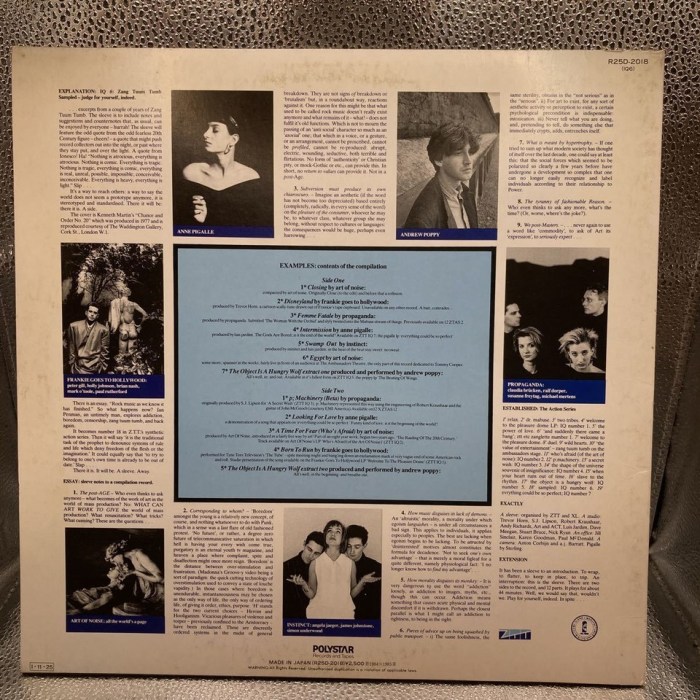
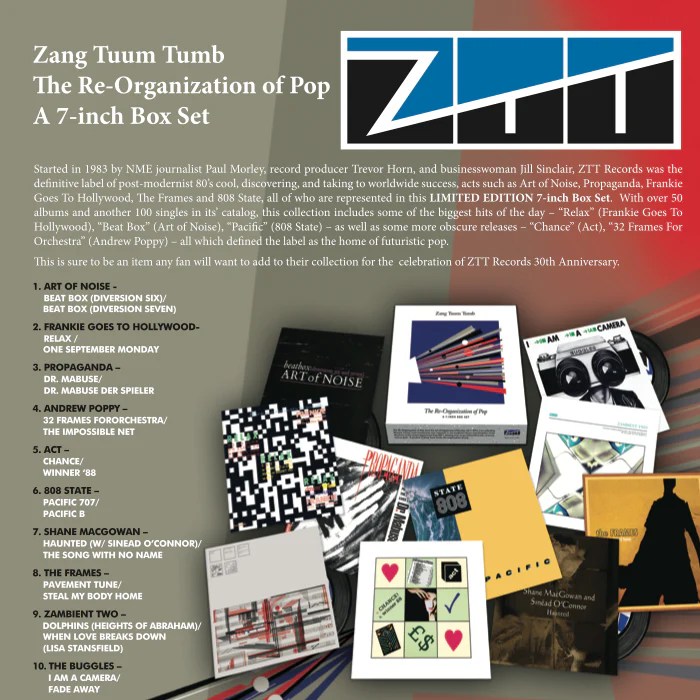
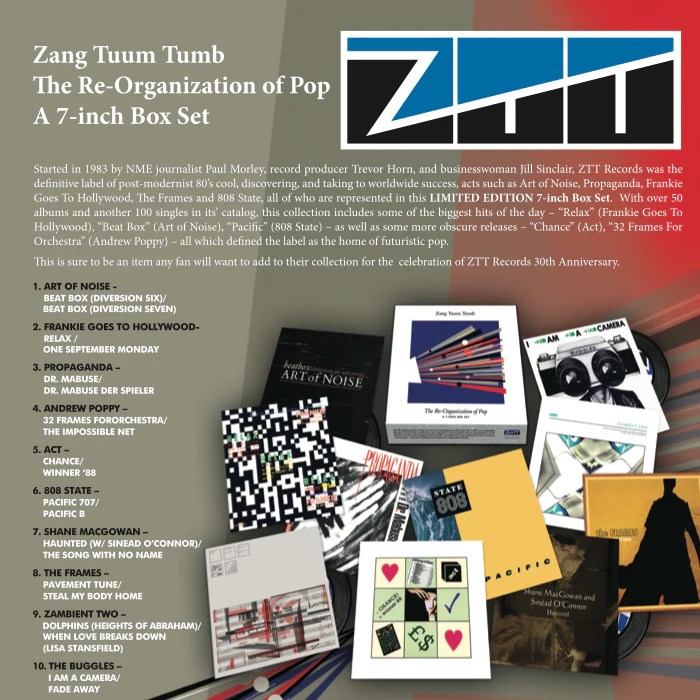


![Voltron Legendary Defenders Oc [P.C.] by sakur1ta on DeviantArt Voltron legendary defender operation kuron](https://master-help.com/wp-content/uploads/2025/06/beb6f38b99618c4420be5642cbaaa41b3cdbda07_hq-1.jpg)
